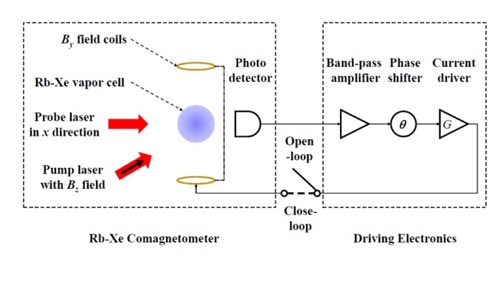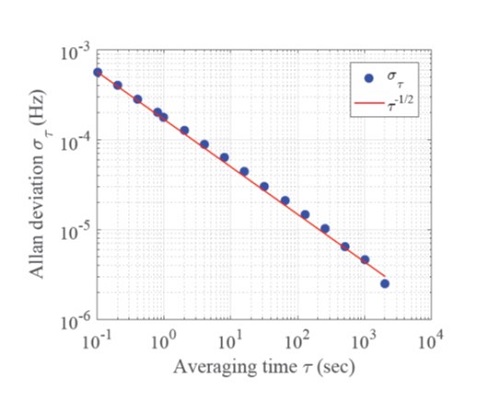The research group of atomic spin gyroscope from the National Time Service Center of the Chinese Academy of Sciences developed a hybrid atomic spin oscillator based on a Rb-Xe atomic comagnetometer.
The research is recently published in Physical Review Applied on July 14.
Atomic comagnetometers have been used in many areas. They can be used for fundamental physical studies such as searching for exotic spin-dependent interaction and axion-like particle, a potential candidate particle for dark matter. High sensitivity atomic comagnetometers are also used in practical applications such as inertial navigation gyroscope and biomagnetism detection, such as human magnetocardiography (MCG) and magnetoencephalography (MEG).
The key parameter limiting the sensitivity of comagnetometers is the atomic spin coherence time. In the demonstrated setup, a close loop self-driven field was utilized to realize the non-decaying spin oscillation signal, prolonging the coherence time to infinite.
"In this way, the comagnetometer works as an active atomic clock, e.g. hydrogen maser, forming a Rb-Xe spin oscillator, whose oscillation frequency is highly sensitive to magnetic field variations", said prof. LIU Guobin, the corresponding author of the work.
As an atomic magnetometer, the Rb-Xe spin oscillator realized a sensitivity <10 fT/Hz1/2 at the frequency range of 0.01-10 Hz. In a long term running up to 2000 seconds averaging time, the absolute frequency instability reaches to about 3*10-6 Hz (the Earth rotation rate is about 11*10-6 Hz).
The results are preliminary. Further analysis shows that the limit of frequency instability is at the level of 10 nHz or even below, which can potentially serve as the gyroscope for inertial navigation or Earth rotation monitoring.

Fig. 1 The experimental setup of the Rb-Xe spin oscillator.(Imaged by NTSC)

Fig. 2 The magnetic sensitivity of the Rb-Xe spin oscillator.(Imaged by NTSC)

Fig. 3 The frequency instability of the spin oscillator up to 2000 seconds.(Imaged by NTSC)
CONTACT:
XIONG Tiantian
National Time Service Center, Chinese Academy of Sciences
gjhz@ntsc.ac.cn
 Print
Print